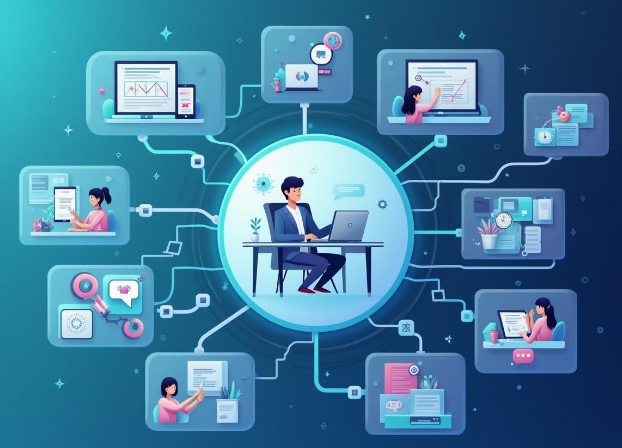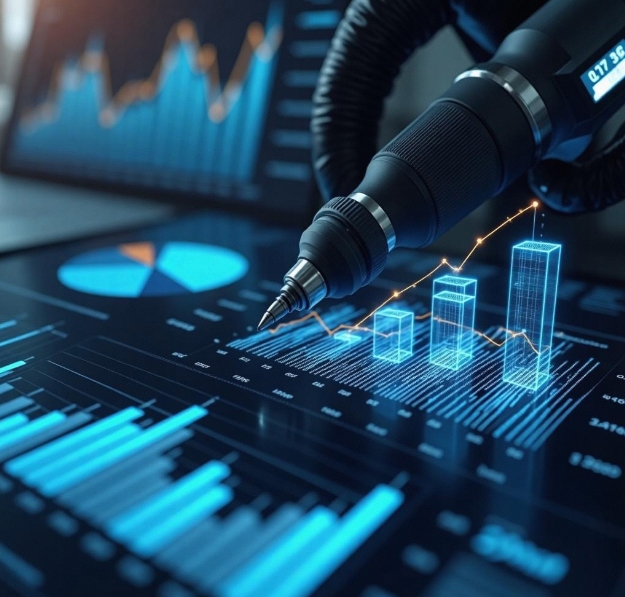ChatGPT Development: Technological Innovation Leading the Intelligent Era
- latest articles
- 1.DApp Development & Customization: Merging Diverse Market Needs with User Experience 2.Analysis of the Core Technical System in DApp Project Development 3.How to achieve cross-chain interoperability in Web3 projects? 4.How does the tokenization of points reconstruct the e-commerce ecosystem? 5.How to Set and Track Data Metrics for a Points Mall? 6.What is DApp Development? Core Concepts and Technical Analysis 7.Inventory of commonly used Web3 development tools and usage tips 8.Development of a Distribution System Integrated with Social E-commerce 9.Six Key Steps for Businesses to Build a Points Mall System 10.What is DApp Development? A Comprehensive Guide from Concept to Implementation
- Popular Articles
- 1.Future Trends and Technology Predictions for APP Development in 2025 2.Analysis of the DeFi Ecosystem: How Developers Can Participate in Decentralized Finance Innovation 3.From Zero to One: How PI Mall Revolutionizes the Traditional E-commerce Model 4.DAPP Development | Best Practices for Professional Customization and Rapid Launch 5.Recommended by the Web3 developer community: the most noteworthy forums and resources 6.From Cloud Computing to Computing Power Leasing: Building a Flexible and Scalable Computing Resource Platform 7.How to Develop a Successful Douyin Mini Program: Technical Architecture and Best Practices 8.Shared Bike System APP: The Convenient Choice in the Era of Smart Travel 9.How to Create a Successful Dating App: From Needs Analysis to User Experience Design 10.From Design to Development: The Complete Process of Bringing an APP Idea to Life
Over the past few decades, technological advancements have transformed the face of the world. From the internet to artificial intelligence (AI), we have entered an era of intelligence. The rapid development of AI, particularly in the field of natural language processing, has brought significant changes to various industries. Among these, OpenAI's ChatGPT, as a dialogue model based on advanced Generative Pre-trained Transformer (GPT) technology, has not only achieved breakthrough progress in the field of artificial intelligence but has also led technological innovation in the intelligent era. This article will delve into the development history, technical principles, and applications of ChatGPT across various fields, and look forward to the future impact of artificial intelligence on human society.
I. The Birth and Development of ChatGPT
ChatGPT is a natural language processing model developed by the American AI research company OpenAI. Founded in 2015, OpenAI is dedicated to developing artificial intelligence systems with general intelligence and aims to make this technology beneficial to all of humanity. As a key product of OpenAI, the initial version of ChatGPT was released in 2018 and has since been continuously updated and iterated, gradually becoming a leading language generation model globally.
ChatGPT is based on the GPT (Generative Pre-trained Transformer) architecture, utilizing large-scale deep learning and natural language processing technologies. The initial GPT model leveraged massive text data for pre-training, enabling it to understand and generate natural language. As technology advanced, the scale of the GPT model expanded, and computational capabilities improved, ultimately leading to the widely used ChatGPT model today.
II. The Technical Principles of ChatGPT
The core technology of ChatGPT is the Generative Pre-trained Transformer (GPT), which is based on the "Transformer" architecture in deep learning. The Transformer architecture was first proposed by Vaswani et al. in 2017 and quickly became the standard technology in the field of natural language processing. The core idea of the Transformer is to process input text information through a self-attention mechanism, maintaining efficient computational performance when handling long sequences.
During the training process of ChatGPT, the model is first pre-trained on massive text data, learning the structure and patterns of language by predicting the probability of the next word or phrase. This process enables the model to grasp knowledge in areas such as grammar, vocabulary, and semantics. After pre-training, the model can generate language outputs related to the input. Through repeated training and optimization, ChatGPT's generation capabilities gradually improve, allowing for smooth and natural conversations.
Another key technical feature of ChatGPT is its large-scale pre-training dataset. OpenAI used various data from the internet, including books, articles, websites, and other content, enabling ChatGPT to acquire rich knowledge and generate diverse language expressions.

III. Application Scenarios of ChatGPT
As ChatGPT technology continues to improve, its application scenarios are becoming increasingly diverse, covering fields from education to healthcare, and from customer service to creative writing.
1. Education
ChatGPT has immense potential in the field of education. Teachers can use ChatGPT to help students answer questions and provide personalized learning guidance. For example, when studying a subject, students can ask ChatGPT questions and receive immediate, professional answers. ChatGPT can not only answer basic questions but also conduct in-depth knowledge analysis, helping students better understand complex concepts.
Additionally, ChatGPT can assist students in language learning by improving foreign language skills through conversational practice. By engaging in dialogue with ChatGPT, students can practice listening and speaking skills, learn authentic language expressions, and enhance their interest in language learning.
2. Customer Service and Business Applications
In the business field, particularly in the customer service industry, ChatGPT is widely applied. Many companies have started using ChatGPT as a customer service bot to help clients resolve common issues. ChatGPT can quickly respond to customer inquiries, provide accurate answers, and reduce the workload of human customer service agents.
For instance, some e-commerce platforms have begun adopting ChatGPT in their customer service systems to improve response efficiency and enhance the customer experience. ChatGPT can handle simple inquiries and resolve more complex issues, thereby improving overall service quality.
3. Creative Writing and Content Generation
In the field of content creation, ChatGPT also demonstrates significant potential. Writers, journalists, and other content creators can use ChatGPT to gain inspiration and even assist in writing to some extent. For example, ChatGPT can generate relevant articles or creative content based on input themes or keywords. This saves content creators a great deal of time and effort, allowing them to focus on the core aspects of their work.
Beyond text creation, ChatGPT can also be used for automated translation and summarization, greatly improving the efficiency of information processing.

IV. Challenges and Future Development of ChatGPT
Although ChatGPT has achieved remarkable success in various fields, it also faces certain challenges and limitations. First, ChatGPT's knowledge updates are limited, as its knowledge comes from pre-training datasets, and the update speed of these datasets lags far behind real-world changes. Therefore, ChatGPT's responses may be outdated compared to the latest knowledge.
Second, although ChatGPT excels in generating natural language, it still has some issues with semantic inaccuracy and logical errors. In certain cases, ChatGPT may generate content that does not align with common sense or facts, requiring developers to continuously optimize the model to improve the accuracy and reliability of its generated content.
With ongoing technological advancements, ChatGPT and related technologies may achieve further breakthroughs in the future. First, as computing power increases and algorithms improve, future versions of ChatGPT may become more intelligent, better understanding context and generating more accurate and appropriate dialogue content. Additionally, with the rise of multimodal AI, future ChatGPT may not be limited to text-based conversations but could integrate various forms of information such as images and sound, providing users with richer and more comprehensive interactive experiences.
V. Conclusion
As a significant representative of artificial intelligence technology, ChatGPT has demonstrated immense potential across multiple fields, driving the arrival of the intelligent era. Whether in education, customer service, business, or content creation, ChatGPT offers more efficient and convenient services. Although challenges remain, with continuous technological progress, we have reason to believe that future versions of ChatGPT will be even more intelligent, bringing further transformations to human society. The development of artificial intelligence technology will not only drive technological progress but will also profoundly impact all aspects of society, ushering in a smarter and more efficient future.
-

How does artificial intelligence technology transform the operational models of modern enterprises?
In the wave of the digital era, artificial intelligence (AI) technology has tran···
-

How to Utilize Artificial Intelligence for Precision Medicine and Health Management
With the rapid advancement of technology, artificial intelligence (AI) has demon···
-

Integration and Application of Artificial Intelligence and Robotics
In today's era of rapid technological advancement, the integration of artificial···

 Blockchain
Blockchain










